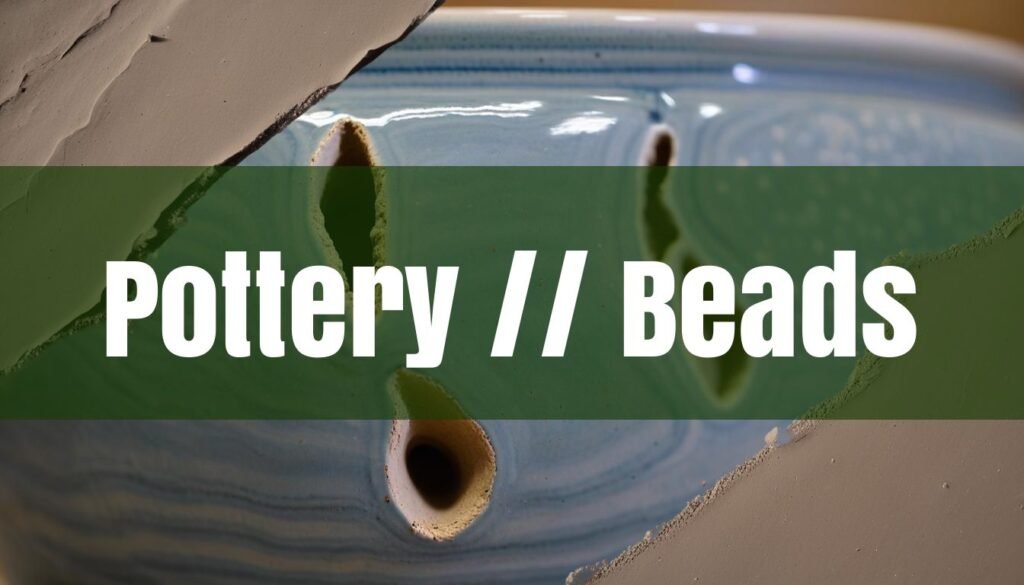Embarking on the journey of crafting your own pottery beads is an adventure into the tactile and artistic world of ceramics. This comprehensive guide will illuminate the path, starting from the selection of the right materials and tools, moving through the shaping and decoration processes, and culminating in the firing and finishing touches that transform simple clay into wearable art.
Choosing the Right Clay and Essential Tools
The foundation of any great pottery bead is, of course, the clay itself. When selecting clay for bead making, consider durability, workability, and suitability for your desired decorative techniques. Stoneware clay bodies are often recommended, especially for beginners, because they balance plasticity for shaping with the structural strength needed for hand building, while also taking color well from underglazes and glazes. Earthen-colored stoneware clays are also a good option, as they produce durable ware and react favorably to reduction firing, further they also have good plasticity, making them ideal for both wheel throwing and hand building.
High fire white stoneware clays offer a clean canvas for a wide range of glaze colors, while porcelains, known for their whiteness and translucency, require a bit more finesse but offer unparalleled hardness and durability.
For tools, a basic bead making kit is an excellent starting point, typically including items such as a baking cushion to prevent distortion, sandpaper for smoothing, a blade for cutting, a circle cutter for consistent shapes, a needle tool for piercing, a lentil bead tool, and a clay roller. Alternatives and additional tools to consider are bamboo skewers for baking beads, acrylic rollers, dual end detail tools, bead baking racks, hollow bead makers, and various silicone molds. These tools will assist in shaping, piercing, and decorating your beads with precision and ease.
Shaping Techniques for Unique Bead Designs
The magic of pottery beads lies in their diverse shapes and forms, achievable through various hand-building techniques. Rolling is a fundamental method, perfect for creating round beads. Simply condition your clay by wedging it to remove air bubbles, then roll small portions between your palms until you achieve the desired roundness. For more complex shapes, pinching involves using your fingers to manipulate the clay, forming lentil or organic shapes. Start with a ball of clay and gently pinch and rotate, gradually refining the form. Molds can also be used to create consistent shapes quickly, some people use bead rollers designed for polymer clay to shape some of their beads, while other beads can also be formed by pressing them into a mold. Mastering wedging techniques for perfect clay will ensure your clay is properly prepared for shaping.
Piercing the beads to create the stringing hole is a critical step. Use a needle tool or skewer to create a centered hole, pushing through until it just starts to protrude from the other side. Withdraw the tool and insert it again from the opposite side to complete the hole. Remember, practice makes perfect, and achieving a straight, centered hole may take some time and patience.
Adding Decorative Elements and Preparing for Firing
Once your beads are shaped and pierced, it’s time to unleash your creativity with decorative elements. Carving intricate patterns or textures into the clay adds depth and visual interest. Painting with underglazes allows for vibrant colors and detailed designs, and glazing gives your beads a professional finish, while also sealing and protecting the surface. There is a wide variety of options to go for, from Underglazes and Ceramic Inks to Engobes & Slips and Glaze Crystals.
Before firing, ensure your beads are completely dry to prevent cracking or warping. This can take several days, depending on the humidity and thickness of the clay. Once dry, the firing process transforms the raw clay into durable ceramic beads. A typical bisque firing schedule involves gradually increasing the kiln temperature to around 1798 degrees Fahrenheit (cone 06). A slow and controlled firing schedule is crucial. The firing schedule example below, heats the kiln at 150 degrees per hour until it reaches 300 degrees, then the kiln heats up 400 degrees per hour until it reaches 1500 degrees, then it heats up 120 degrees per hour until it reaches 1800 degrees and it holds at 1800 degrees for 10 minutes, then the kiln cools down 150 degrees per hour until it reaches 400 degrees. The whole firing time takes approximately 17 hours. After firing, allow the kiln to cool completely before opening it to avoid thermal shock. For more information on the process, refer to this guide on firing temperatures.
With your pottery beads now fired, glazed, and cooled, the final step is to incorporate them into your jewelry or craft projects.
String them onto cords or wires, combine them with other beads and findings, and let your imagination guide you. Whether you’re creating necklaces, bracelets, earrings, or decorative accents, your handmade pottery beads will add a unique and personal touch to your creations.





